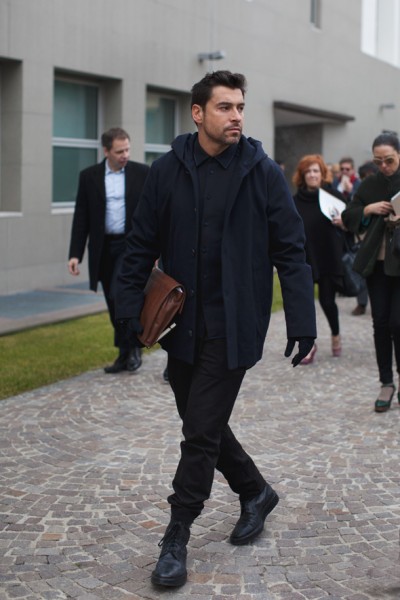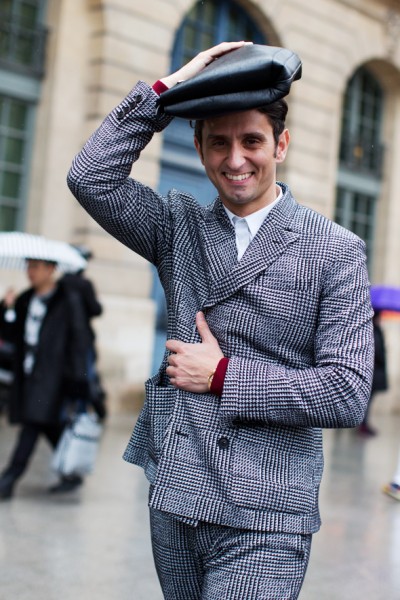Buttoned top button of shirt psychology. Do I need to button the bottom button of my jacket?
The basic rule for wearing three-button jackets is “Sometimes, Always, Never” – sometimes fasten the top button, always the middle button, and never the bottom button. If your jacket has two buttons, always fasten only the top button.
The same rule applies to vests: the bottom button must remain undone. This is an unshakable standard in men's fashion (women are usually allowed to fasten the bottom button). Designers of men's suits often even cut jackets and vests in such a way that they look better with the bottom button undone.
One cannot but agree that this is a rather strange rule - why sew on this button at all if no one ever fastens it? Where did this tradition come from? The answer goes back to King Edward VII, who suffered from considerable obesity. When Edward VII was still the Prince of Wales, and jackets were just beginning to come into fashion, the waistcoat became too narrow for the future king and he stopped buttoning the bottom button to make the waistcoat fit better. As a sign of respect for their king, the British court - and after him, all other residents of England and the British colonies also stopped buttoning the bottom button.
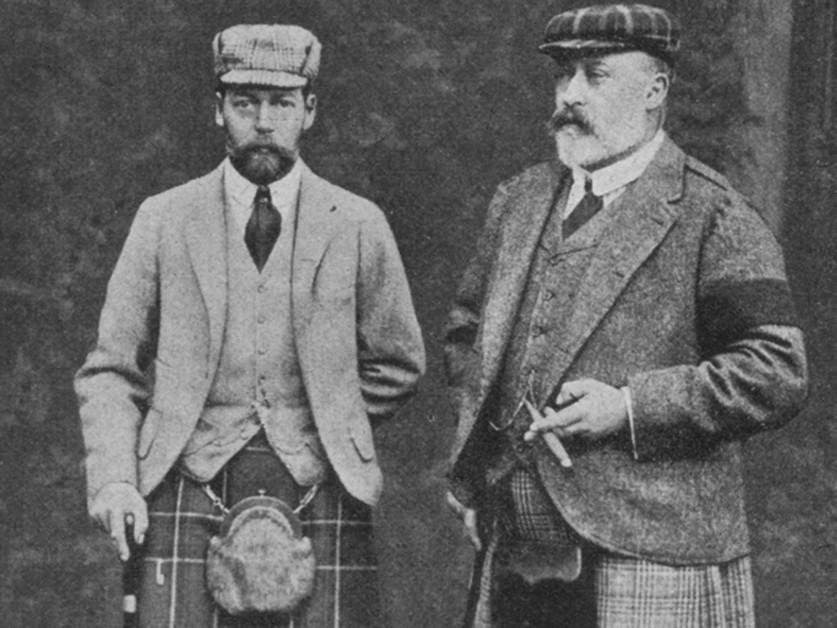
Edward VII (right) and Prince George (left), 1901. The bottom button of Edward's vest is undone
GQ magazine editor Robert Johnson says the Edwardian Theory is not always taken seriously, but British fashion historians believe it an indisputable fact. The truth is that Edward did not fasten the bottom buttons of his vest and jacket. various reasons. Jackets are unbuttoned at the bottom because they replaced frock coats for riding.
The history of the Edwardian theory is best understood by Sir Hardy Amies, an English fashion designer who served as Queen Elizabeth II's personal tailor for nearly four decades. His Savile Row house is renowned for its superbly tailored men's suits, so Sir Amis knows a thing or two about suiting and fine taste.
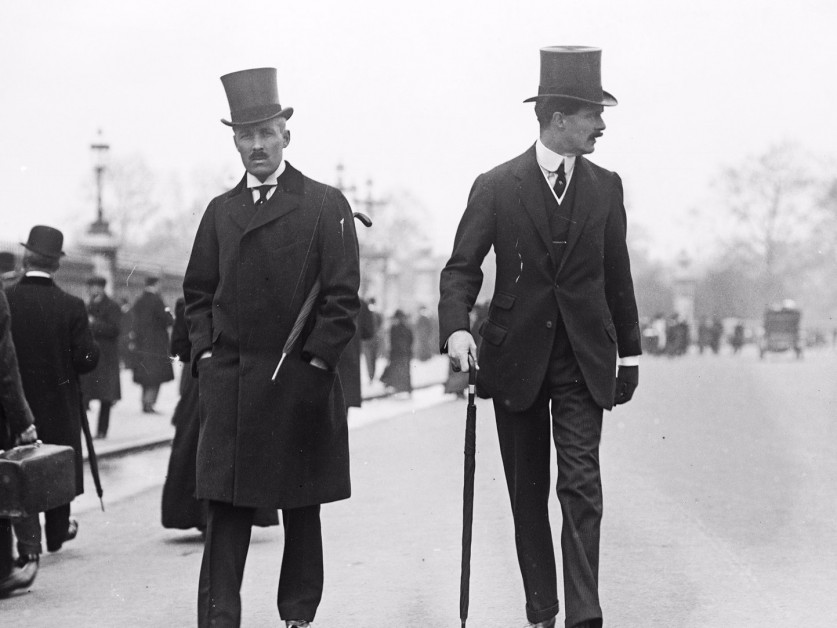
Duke of Roxburgh Buckingham Palace in 1910 after the death of Edward VII. The bottom button of his jacket is undone
During a speech given in 1992 to the Royal Society for the Arts, Manufactures and Commerce, he traced the history of English men's suit from 1670 to the present day. The modern single-breasted suit was first introduced in 1906 and was commonly referred to as a suit jacket. His jacket had three buttons, but was slightly different from the modern one - it was intended for everyday wear and had a loose cut so that its owner would look more successful while holding the reins. Thus, the jacket pair began to gradually replace traditional frock coats for riding. And since the third button of a frock coat was above the waistline, people in a jacket had to unbutton the bottom button so that the clothes would sit without wrinkles when the owner was riding a horse.
Edward VII then decided that the top button should also be undone for a more casual look, and the jacket was held together only by the middle button.
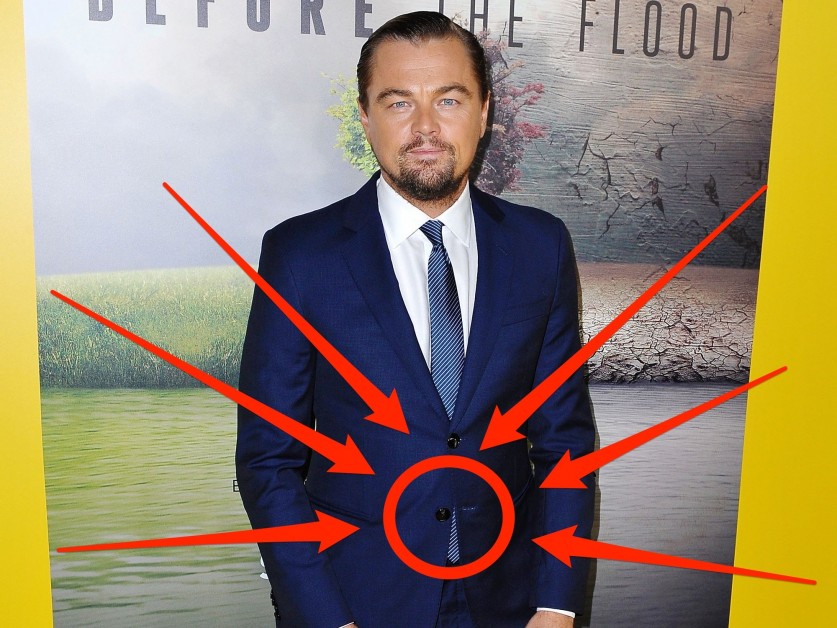
Leo knows what he's doing
When the suit jacket became widespread as casual wear, Edward VII continued to leave the bottom button undone in homage to riding coats. Well, his vests were unbuttoned at the bottom, because Edward was very plump.
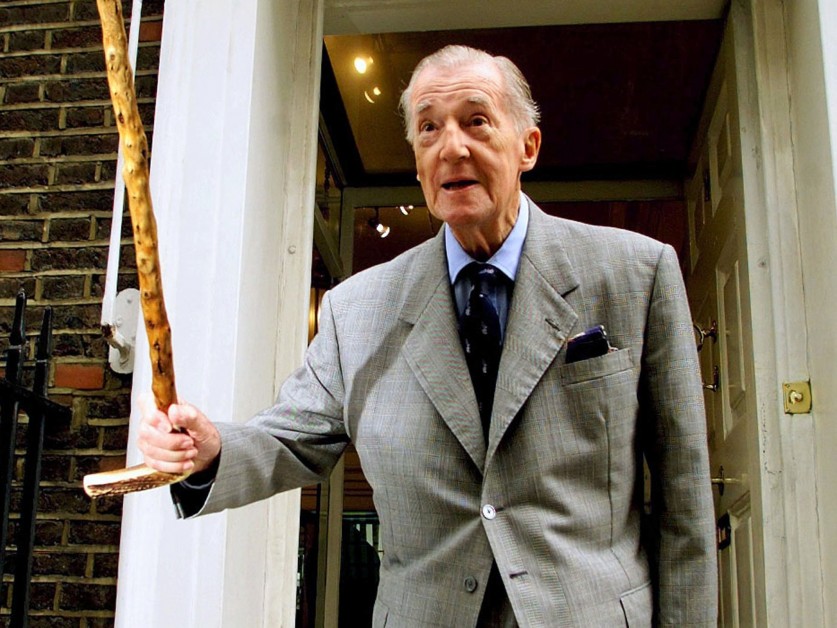
Queen Elizabeth II's personal tailor Sir Hardy Amies on his 90th birthday in 1999. The suit fits him perfectly
According to the Oxford Dictionary of National Biography, Edward had a legendary appetite and an equally legendary interest in men's fashion. According to Sir Amis, we also owe the tradition of unbuttoning the bottom button of a vest to Edward. He left the bottom button of his vest undone because he was overweight, and the rest copied his style. This fashion was followed by the entire British Empire, but not the American continent. However, today, unbuttoning the bottom button is considered the norm in America. The cut of modern vests provides that the bottom button will not be fastened.
When a man just begins to create his own style and develop taste, he encounters various questions along the way. For example, “what is the main thing in a man’s style?” or “what mistakes not to make so as not to look stupid?” or “what is better to wear or how to wear it?” I’m sure every man has faced similar questions, which his family and friends, the Internet or, ultimately, books helped him answer. However, it will take quite a lot of time to study all the information. That's why we've collected 25 tips for a man who doesn't want to look stupid.
Mistakes in men's style
Every high school student should know what we list below. So here is a list of tips:
- Unbutton the bottom button of your jacket. It is not designed to be fastened.
- The same goes for vests and cardigans.
- After purchasing a jacket, remove all labels before wearing it.
- Some jackets have threads on the shoulders after purchase. Carefully remove the threads with scissors.
- The chest pocket, side pockets of the jacket and the back pocket of the trousers can be sewn. Also, carefully remove the threads with scissors; do not pull the thread, as this may ruin the clothes.
- If you have not yet bought a suit (jacket), but are just planning to, do not buy a single-breasted jacket with 4 or more buttons. It won't fit anywhere.
- It is not necessary to fasten the top button of the coat. It even happens that on some models the lapels are so curved that it is simply impossible to fasten the top button - this is such a style.
- Combine by color classic shoes and a belt. Black shoes, black belt. Brown shoes, brown belt.
- Belt or suspenders, choose one.
- The sleeves of your jacket should be 1 - 1.5 centimeters shorter than the sleeves of your shirt. They should peek out a little.
- Your trousers should not be too long. Put your shoes on, look at the heel. The distance from the ground to the trousers should be 1.5 - 2 centimeters - this is the normal length. Anything short - fashion trends and styles.
- If after purchasing a suit requires the intervention of a tailor, do not regret 1000 rubles and have it tailored to you.
- Your coat should not be very tight-fitting. Put on your coat, button the buttons and try to put your hand between the buttons and make a fist. If the coat is unbuttoned, it’s not your size, look for a larger one.
- The tip of your tie should be at waist level. Not higher, not lower.
- Don't wear your dad's old tie that was in fashion 20 years ago. The tie should match the width of the jacket lapels, so go to the store and pick out one good navy or burgundy tie.
- If possible, wear a tie with a blazer, jacket or, at worst, knitwear. Don't just wear a classic tie.
- The black suit is only for holidays and funerals. In all other cases, any suit except black.
- Don't wear a phone case that looks like a holster hanging from your belt. It just looks terrible and “old man-like.”
- The same goes for borsets, the 90s are already over. Briefcase only.
- Don't buy square shoes when you can buy round toe shoes.
- Never wear long socks when wearing shorts. Only short socks that are not visible from under your shoes.
- Never, EVER wear socks if you are wearing sandals.
- Flip-flops are worn at sea or in the pool. Don't wear them in the city.
- Do not wear sloppy, dirty or wrinkled clothing. Respect yourself first.
- Use natural fabrics, no polyester or other synthetics.
10 more mistakes in men's style - video
The basic rule for wearing three-button jackets is “Sometimes, Always, Never” – sometimes fasten the top button, always the middle button, and never the bottom button. If your jacket has two buttons, always fasten only the top button.
The same rule applies to vests: the bottom button must remain undone. This is an unshakable standard in men's fashion (women are usually allowed to fasten the bottom button). Designers of men's suits often even cut jackets and vests in such a way that they look better with the bottom button undone.
One cannot but agree that this is a rather strange rule - why sew on this button at all if no one ever fastens it? Where did this tradition come from? The answer goes back to King Edward VII, who suffered from considerable obesity. When Edward VII was still the Prince of Wales, and jackets were just beginning to come into fashion, the waistcoat became too narrow for the future king and he stopped buttoning the bottom button to make the waistcoat fit better. As a sign of respect for their king, the British court - and after him, all other residents of England and the British colonies also stopped buttoning the bottom button.
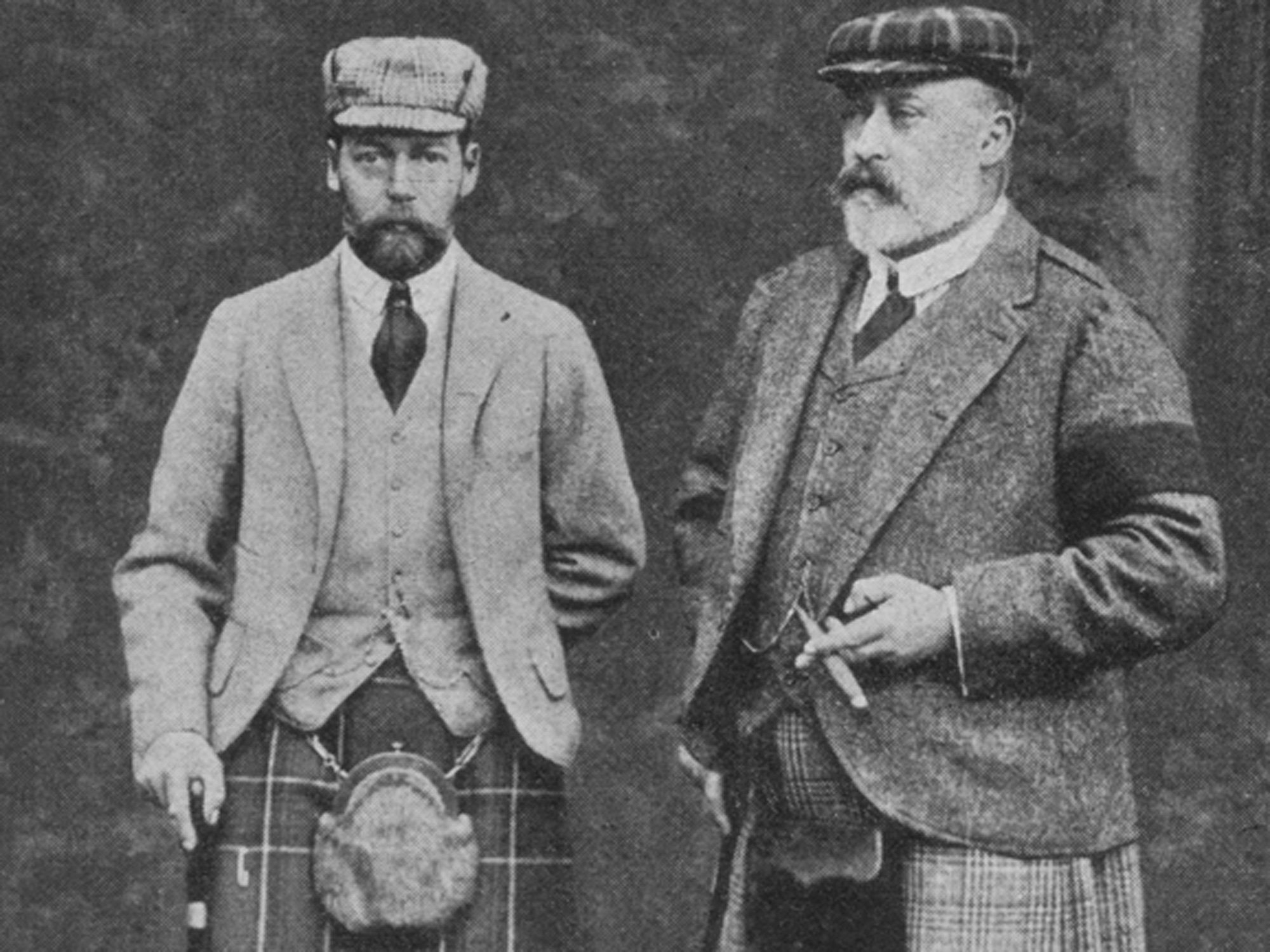
Edward VII (right) and Prince George (left), 1901. The bottom button of Edward's vest is undone
GQ magazine editor Robert Johnson believes that the Edwardian Theory is not always taken seriously, but historians of British fashion consider it an indisputable fact. The truth is that Edward did not fasten the bottom buttons of his vest and jacket for various reasons. Jackets are unbuttoned at the bottom because they replaced frock coats for riding.
The history of the Edwardian theory is best understood by Sir Hardy Amies, an English fashion designer who served as Queen Elizabeth II's personal tailor for nearly four decades. His Savile Row house is renowned for its superbly tailored men's suits, so Sir Amis knows a thing or two about suiting and fine taste.
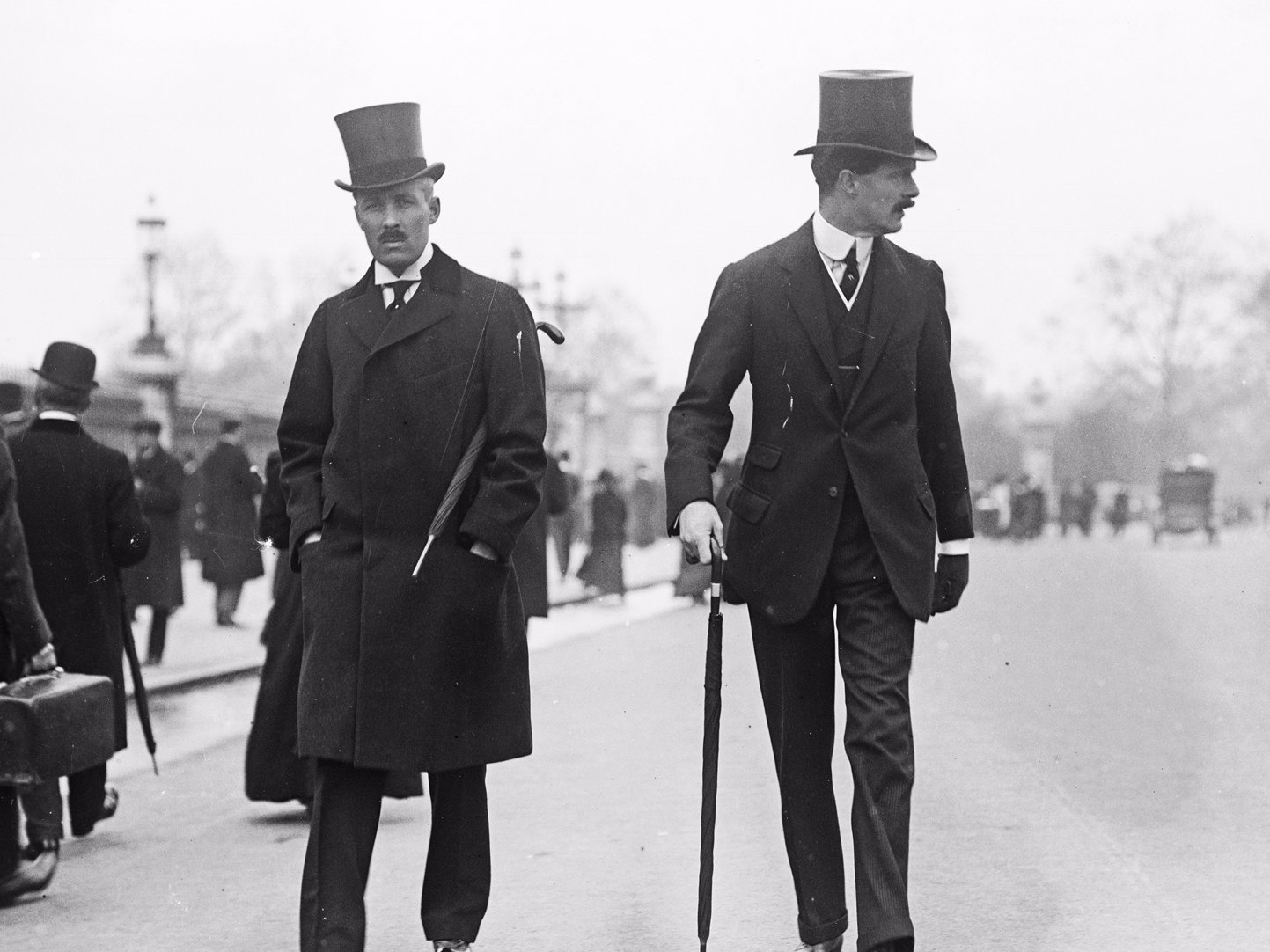
The Duke of Roxburgh at Buckingham Palace in 1910 after the death of Edward VII. The bottom button of his jacket is undone
During a speech given in 1992 to the Royal Society for the Encouragement of Arts, Manufactures and Commerce, he traced the history of English men's suits from 1670 to the present day. The modern single-breasted suit was first introduced in 1906 and was commonly referred to as a suit jacket. His jacket had three buttons, but was slightly different from the modern one - it was intended for everyday wear and had a loose cut so that its owner would look more successful while holding the reins. Thus, the jacket pair began to gradually replace traditional frock coats for riding. And since the third button of a frock coat was above the waistline, people in a jacket had to unbutton the bottom button so that the clothes would sit without wrinkles when the owner was riding a horse.
Edward VII then decided that the top button should also be undone for a more casual look, and the jacket was held together only by the middle button.
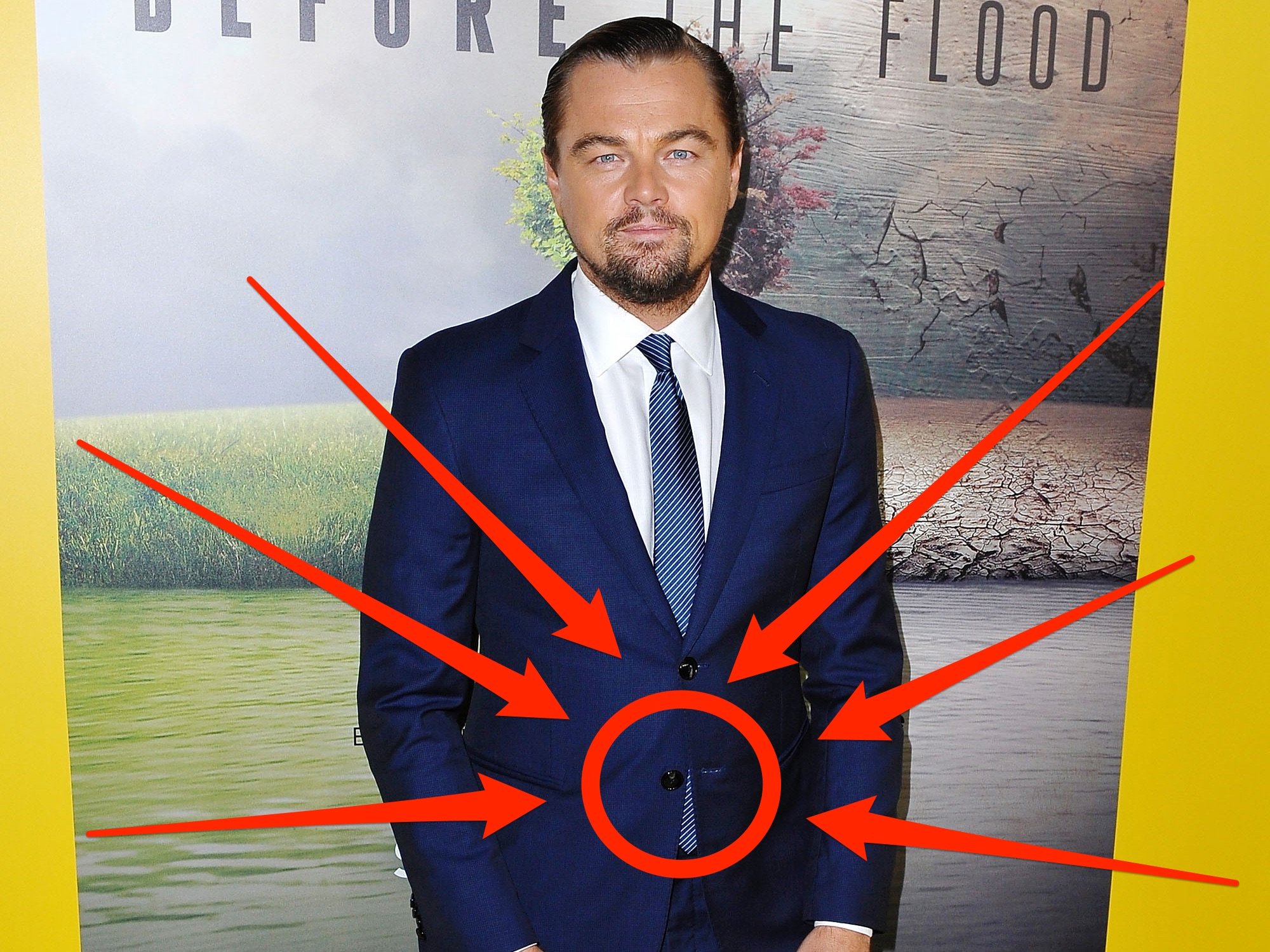
Leo knows what he's doing
When the suit jacket became widespread as casual wear, Edward VII continued to leave the bottom button undone in homage to riding coats. Well, his vests were unbuttoned at the bottom, because Edward was very plump.
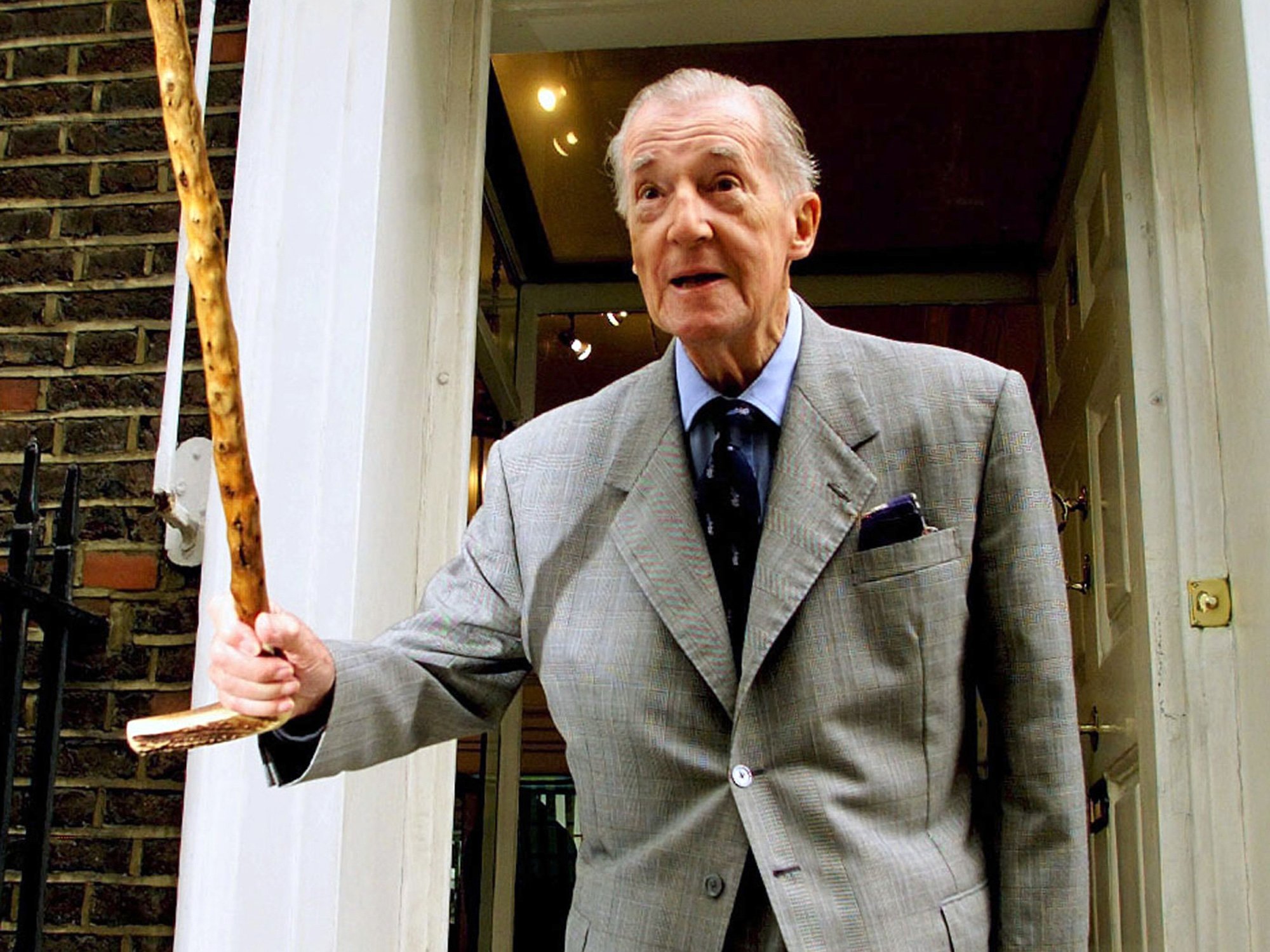
Queen Elizabeth II's personal tailor Sir Hardy Amies on his 90th birthday in 1999. The suit fits him perfectly
According to the Oxford Dictionary of National Biography, Edward had a legendary appetite and an equally legendary interest in men's fashion. According to Sir Amis, we also owe the tradition of unbuttoning the bottom button of a vest to Edward. He left the bottom button of his vest undone because he was overweight, and the rest copied his style. This fashion was followed by the entire British Empire, but not the American continent. However, today, unbuttoning the bottom button is considered the norm in America. The cut of modern vests provides that the bottom button will not be fastened.
Today, jackets mostly have two buttons, although a three-button version is also found. In any case, follow Edward's instructions and leave the lowest button undone.
Once upon a time, noticing the buttoned top button of the shirt collar of some of my friends, I wondered: why do they do this? The fact is that they dressed quite normally, even mediocrely: a cheap shirt, a faceless jacket or sweater - this is how millions of men in Russia dress. Moreover, they did not wear a tie. The result was a kind of schoolboy look, English speakers would say “nerdy”.
The look is neat and will probably please the teacher's eye. However, if you grow up, go to work and continue to do so, it looks strange. It seemed so to me then - it seems so now.
But don’t think that everything is so simple: if you don’t have a tie, don’t fasten the button; if you have a tie, fasten it. IN modern world everything is intertwined and confused, and many of the rules should not be taken literally.
If you look at street fashion photographs or just pay attention to young fashionable people on the street, you will notice that many people like to button up this very top button.
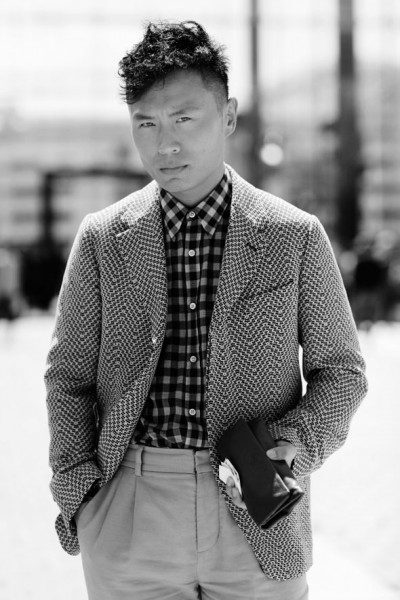
Some fashion researchers adhere to the point of view that trends are irrational, that is, they arise on their own, without any reason. Avid pragmatists argue that any innovation in clothing has a tangible utilitarian reason, economic or social, for example. It seems that the truth, as always, is somewhere in the middle: this trend is both a whim of fashion and at the same time it can be rationally explained. Let's try to do this.
Note that the buttoned top button of a shirt looks like a fashion statement only in casual or any other informal outfit. In the classics, if you have a jacket or sweater, the eye asks to complement the look with a tie (photo below).
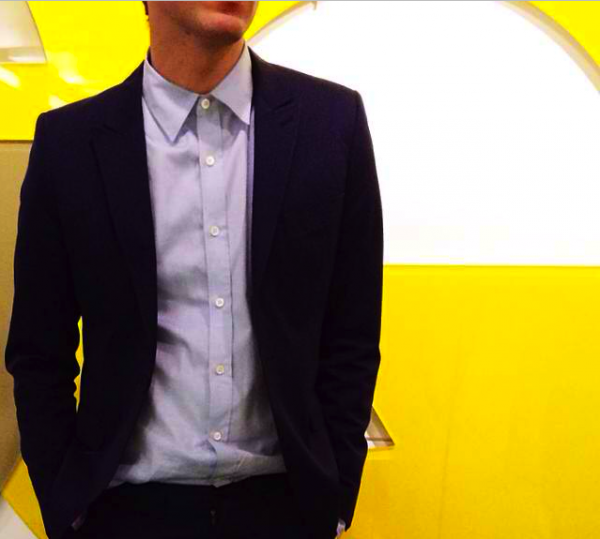
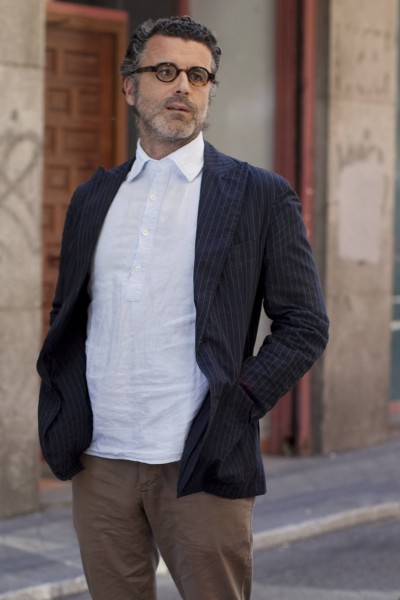
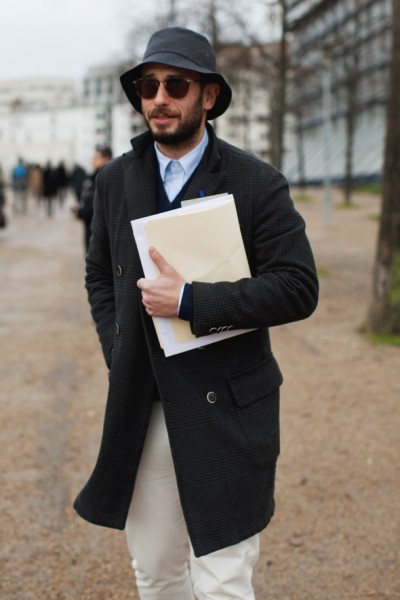
What fashion codes can this gesture contain? Firstly, a buttoned top button makes the look neat, clear, more collected, and dressy. At the same time, this is not a conformist “decent” set of “jacket - trousers - shirt”. This last factor contains a second, non-obvious, message - rebellious. This can be called a kind of opposition to the philistine relaxed image with the top button undone:
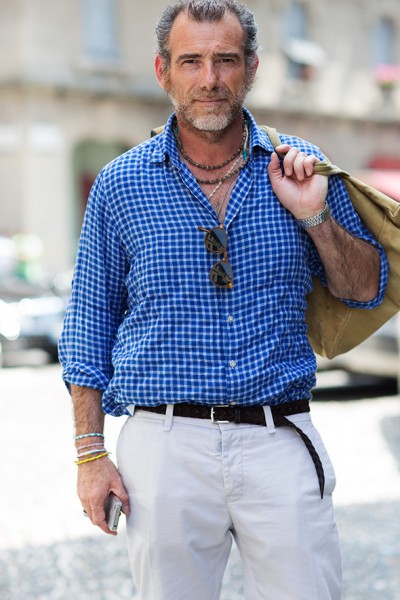
For the first time, we notice this kind of fashionable gesture among mods, hipster rebels of the 50s and 60s:
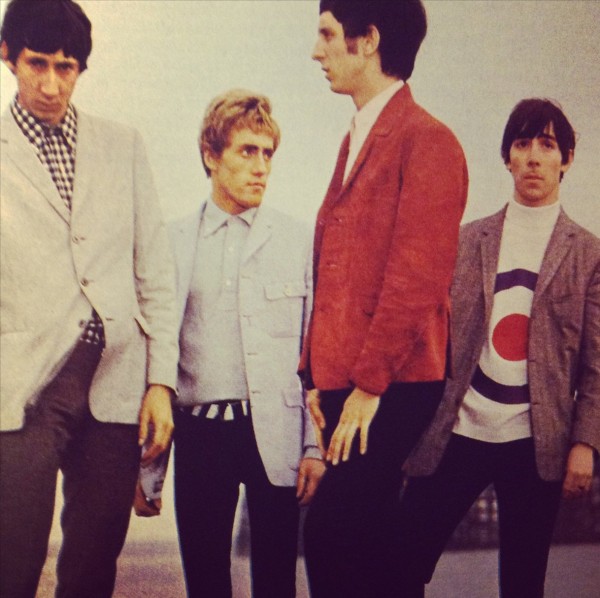
David Lynch, by the way, one of my favorite directors, always fastens the top button:

Ivan Rodic, one of the most famous street-fashion photographers, does this very often:

We notice this detail in so many street fashion photographs these days:
